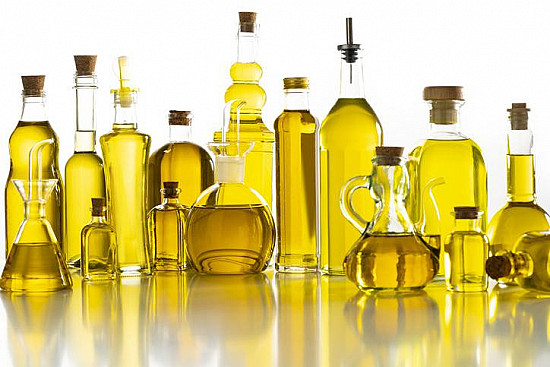The 2010 Dietary Guidelines
Government officials declined to follow recommendations on sugar-sweetened beverages and salt.
When the federal government's 2010 Dietary Guidelines finally came out at the end of January 2011, there was more praise for their dos than their don'ts. Some consumer groups and nutrition experts commended the emphasis on combating obesity, controlling calorie intake, and eating fresh fruit and vegetables (important, if safe and hackneyed, advice). But Walter Willett, chair of the Harvard School of Public Health's nutrition department and a member of the Health Letter's editorial board, was among the critics who faulted the guidelines for hiding behind abstractions like "solid fat" and "added sugar" in the "don'ts" chapter on foods we should be eating less of. The guidelines would be more effective, he says, if the message to Americans was to eat less red meat, cheese, and ice cream, and, from the refined grain group, less white rice and white bread.
One problem that has occurred in the past is that the guidelines, which are written by government officials, have deviated significantly from the recommendations of the scientific advisory committees charged with collecting and analyzing the evidence upon which the guidelines are supposed to be based. Willett and others say the disconnect reflects the influence of powerful agricultural and food industry interests.
Eric Rimm, an associate professor of epidemiology and nutrition at the Harvard School of Public Health, was a member of the scientific advisory committee for the 2010 guidelines. In his opinion, the government did a "pretty good job" with the guidelines this time. He discussed with us a couple of key areas where the final version parted company with the recommendations of the scientific committee.
Sugar-sweetened beverages: Avoid vs. reduce
The guidelines are pretty tough on added sugars, a group that includes honey, molasses, and maple syrup, as well as high-fructose corn syrup and chemical concoctions like anhydrous dextrose. About 16% of all the calories in Americans' diets come from these sweet-tooth enablers. As the guidelines point out, the body doesn't distinguish in a big way between sugars that are found naturally in food and those that are added, but many of the foods that contain added sugars are nutritionally vacuous, supplying calories and little else. Sugar-sweetened beverages — soda, energy drinks, and sports drinks — are the main sources of added sugars in the American diet, together accounting for about 36% of the total.
The scientific advisory committee wanted the guidelines to say that people should avoid sugar-sweetened beverages — a simple, clear don't-go-there message. Instead, there's a much milder admonition to reduce intake, either by drinking fewer of them (which for some people might mean drinking three sodas a day instead of four) or smaller servings (which is certainly good news for soda companies marketing 7.5-ounce "mini" servings).
Not all is lost. At the same time as the guidelines were released, the government issued six "selected messages" about simple actions you can take to follow the guidelines. One is "drink water instead of sugary drinks," which is good, plainspoken advice.
Sodium: 2,300 mg vs. 1,500 mg
Sodium is on the dietary watch list because it tends to increase blood pressure, and high blood pressure is a risk factor for stroke, heart disease, and kidney disease. Only a fraction (between 5% and 10%) of the sodium in the American diet comes from salt we add at the table or in cooking at home. The lion's share is in processed and ready-to-eat food like pizza and, somewhat surprisingly, breads made with yeast. As the guidelines mention, American sodium intake is excessive (3,400 milligrams a day, on average) not because of a few highly salted foods, although they certainly don't help any. Our sodium intake goes through the roof because so many popular foods contain some salt.
The 2005 Dietary Guidelines set a daily goal of no more than 2,300 milligrams (mg) of sodium, which is the amount in a teaspoon of table salt. Rimm and his fellow scientists recommended lowering the goal to 1,500 mg a day, although gradually, to give salt-crazed American palates time to adjust. It's not a radical suggestion: that's what the American Heart Association recommended in 2010. But the writers of the 2010 guidelines stuck with 2,300 mg for the general population, noting that only 15% of Americans currently manage to keep their intake that low.
The guidelines do set the bar at 1,500 mg for groups of people who, on average, are known to be more sensitive to the blood pressure–raising effects of salt, which include African Americans, people who already have high blood pressure, and those ages 51 and older. That's half of the population, so the difference between the scientists' advice and the guidelines isn't huge. But, as Rimm points out, if the general recommendation were 1,500 mg instead of 2,300, there would be more of a concerted effort by the government and industry to wring sodium out of the food supply.
Till then, there are some steps we can take as individuals: read labels and buy low-sodium alternatives, eat more fresh fruit and vegetables, dine in rather than out. A restaurant meal can be a sodium bomb that wipes out painstaking efforts to stint on salt. There's also some evidence that the harmful effects of sodium can be offset by leafy green vegetables, bananas, and other foods that contain a great deal of potassium.
Disclaimer:
As a service to our readers, Harvard Health Publishing provides access to our library of archived content. Please note the date of last review or update on all articles.
No content on this site, regardless of date, should ever be used as a substitute for direct medical advice from your doctor or other qualified clinician.















